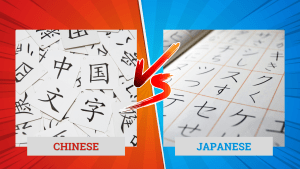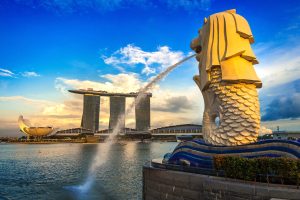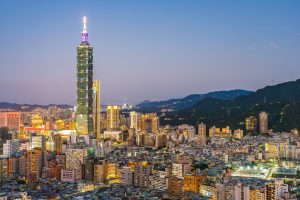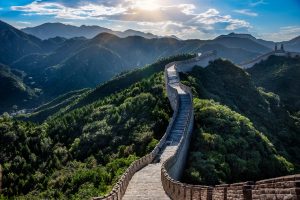Cultural festivals in Asia offer unique opportunities for global brands to connect with local audiences and enhance their marketing effectiveness. As part of our ongoing series of articles on marketing translation and localization approaches, here are our top cultural festivals in Asia that global brands should be aware of.
Top Asian Festivals For Localized Marketing
1. Chinese New Year
Celebrated across many Asian countries, Chinese New Year is a major event for marketing campaigns. It’s particularly grand in Singapore, featuring a three-day celebration with dragon parades, fireworks, and street parties. Brands can leverage this festival for themed promotions and limited-edition products. The festival, also known as Lunar New Year, has significant economic impact, with consumer spending reaching an estimated $1.5 trillion in 2023. Marketers should consider using Mandarin, Cantonese, and local languages in their campaigns to effectively reach diverse Chinese-speaking communities.
2. Songkran (Thailand)
Known as the world’s biggest water fight, Songkran celebrates the Thai New Year in April. This energetic festival sees crowds throwing water at each other in the streets. Brands could create water-resistant products or sponsor water-themed events during this period. Songkran’s origins are deeply rooted in Thai mythology, with connections to God Indra and the solar calendar. Marketers should primarily use Thai language, but English is also widely understood in tourist areas.
3. Diwali (India)
The Festival of Lights is one of India’s most important celebrations. It’s an excellent opportunity for brands to create special Diwali-themed packaging or promotions centered around light and prosperity. Diwali is a prime time for advertising in India, with e-commerce players dedicating significant budgets to this period. Hindi and English are commonly used in marketing campaigns, but regional languages should also be considered for targeted messaging.
4. Holi (India)
This vibrant festival of colors, celebrated in March, involves people smearing each other with bright colors. Brands could create color-themed products or sponsor color runs during this time. Holi symbolizes the triumph of good over evil and the arrival of spring. Marketers should consider using Hindi, English, and regional languages to reach diverse Indian audiences.
5. Dragon Boat Festival (China and East Asia)
Celebrated on the fifth day of the fifth lunar month, the Dragon Boat Festival (Duanwu Festival) offers Western brands a unique marketing opportunity. This traditional holiday commemorates the ancient poet Qu Yuan and features spectacular dragon boat races and traditional rice dumpling (zongzi) eating.
Brands like Starbucks have successfully leveraged this festival by introducing special seasonal products, demonstrating how global companies can respectfully engage with local cultural celebrations. Marketers should primarily use Mandarin Chinese, but consider local languages in other East Asian countries where the festival is celebrated.
6. Taiwan Lantern Festival
This stunning festival in the Pingxi District features thousands of sky lanterns released into the night sky. It’s a visually appealing event that brands could use for creating atmospheric marketing campaigns. The festival combines traditional folklore with modern artistry. Marketers should use Traditional Chinese and English for their campaigns in Taiwan.
7. Harbin Ice and Snow Festival (China)
This winter festival showcases incredible ice sculptures and snow art. It’s an opportunity for brands to create winter-themed marketing campaigns or sponsor ice sculpture competitions. The festival attracts millions of visitors annually, making it a significant tourism event. Mandarin Chinese is the primary language for marketing, with some English for international visitors.
8. Naadam Festival (Mongolia)
Celebrating Mongolia’s nomadic culture, this festival features traditional sports like horse racing, archery, and wrestling. Brands could sponsor athletes or create marketing campaigns around themes of strength and tradition. Naadam is inscribed on UNESCO’s Representative List of the Intangible Cultural Heritage of Humanity. Marketers should use Mongolian language primarily, with some English for international audiences.
9. Bali Spirit Festival (Indonesia)
This annual event celebrates yoga, dance, and music. It’s an excellent opportunity for wellness and lifestyle brands to engage with health-conscious consumers. The festival promotes cultural exchange and personal growth through various workshops and performances. Indonesian and English are both widely used in marketing for this event.
10. George Town Festival (Malaysia)
A month-long celebration of art, music, theatre, and film in Penang. This festival offers opportunities for brands to sponsor cultural events or create art-themed marketing campaigns. The festival showcases both local and international artists, promoting cultural diversity. Marketers should consider using Malay, English, and Chinese (particularly Hokkien) for their campaigns in Penang.
Key Localization Strategies for Festival Marketing
Western brands looking to penetrate Asian markets must understand that festival marketing is more than just a promotional tactic—it’s a gateway to cultural connection and consumer trust.
1. Cultural Sensitivity and Authenticity
Successful festival marketing in Asia hinges on deep cultural understanding. Each festival carries profound significance beyond commercial opportunities. Brands must approach these celebrations with respect and genuine interest.
2. Digital-First Engagement
Social media platforms are critical for festival marketing in Asia:
- WeChat, Douyin, and Xiaohongshu offer targeted advertising opportunities
- 40% increase in social media engagement during festival periods
- Platforms allow for interactive, culturally nuanced campaigns.
3. Strategic Localization Techniques
Effective localization involves:
- Creating limited-edition products
- Using culturally significant colors and symbols
- Collaborating with local influencers
- Developing region-specific marketing narratives
Practical Implementation
Influencer Partnerships
Local influencers can help brands:
- Navigate cultural nuances
- Create authentic marketing messages
- Extend brand reach during festivals
Interactive Experiences
Brands should focus on creating memorable, engaging experiences that:
- Respect local traditions
- Offer interactive elements
- Generate user-generated content
Technology and Innovation
Emerging marketing technologies like augmented reality can enhance festival marketing strategies, creating immersive experiences that resonate with local audiences.
Key Takeaways for Festival Marketing
- Understand cultural context
- Prioritize authenticity
- Leverage digital platforms
- Create localized, engaging content
- Respect traditional values
By implementing these strategies, Western brands can transform festival marketing from a transactional approach to a meaningful cultural dialogue.





